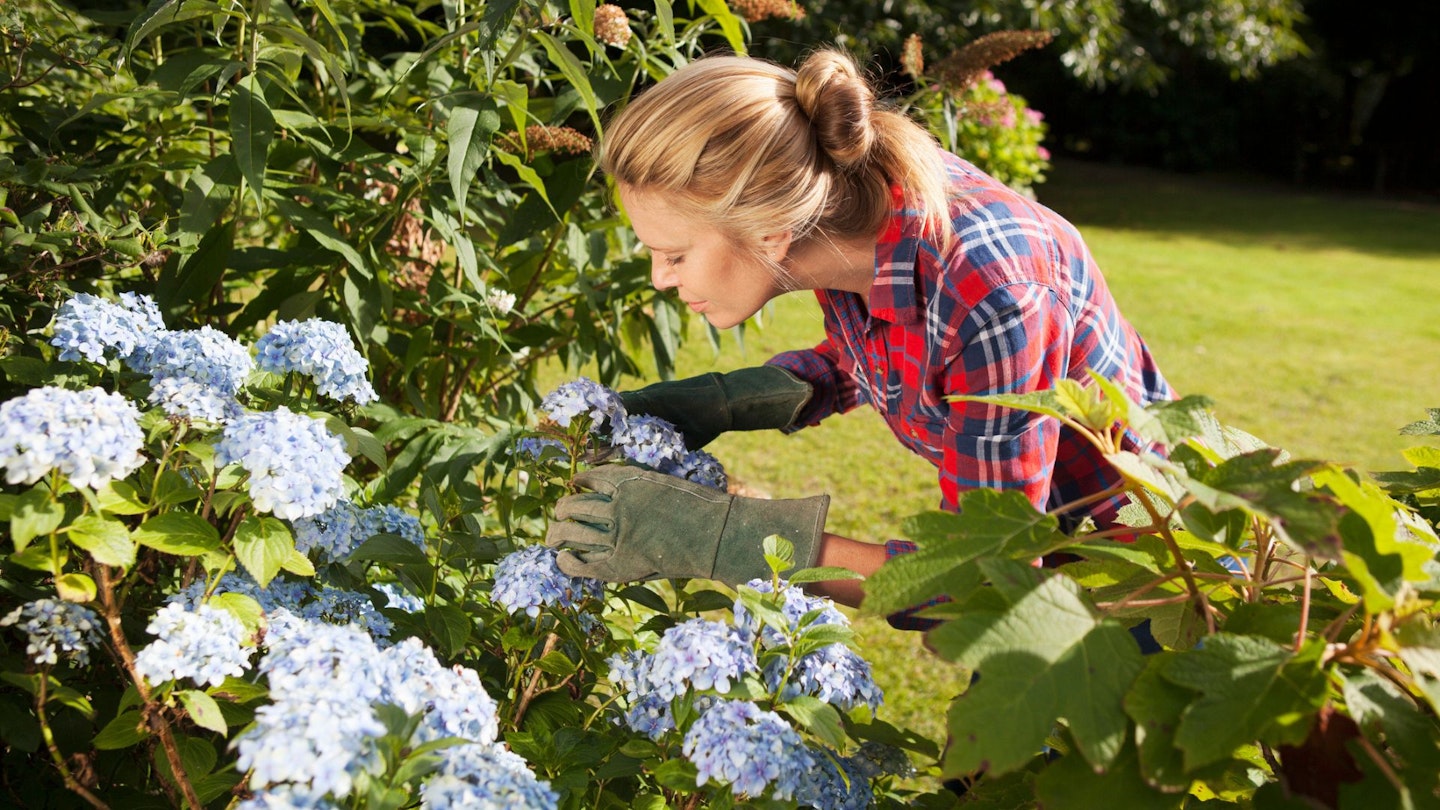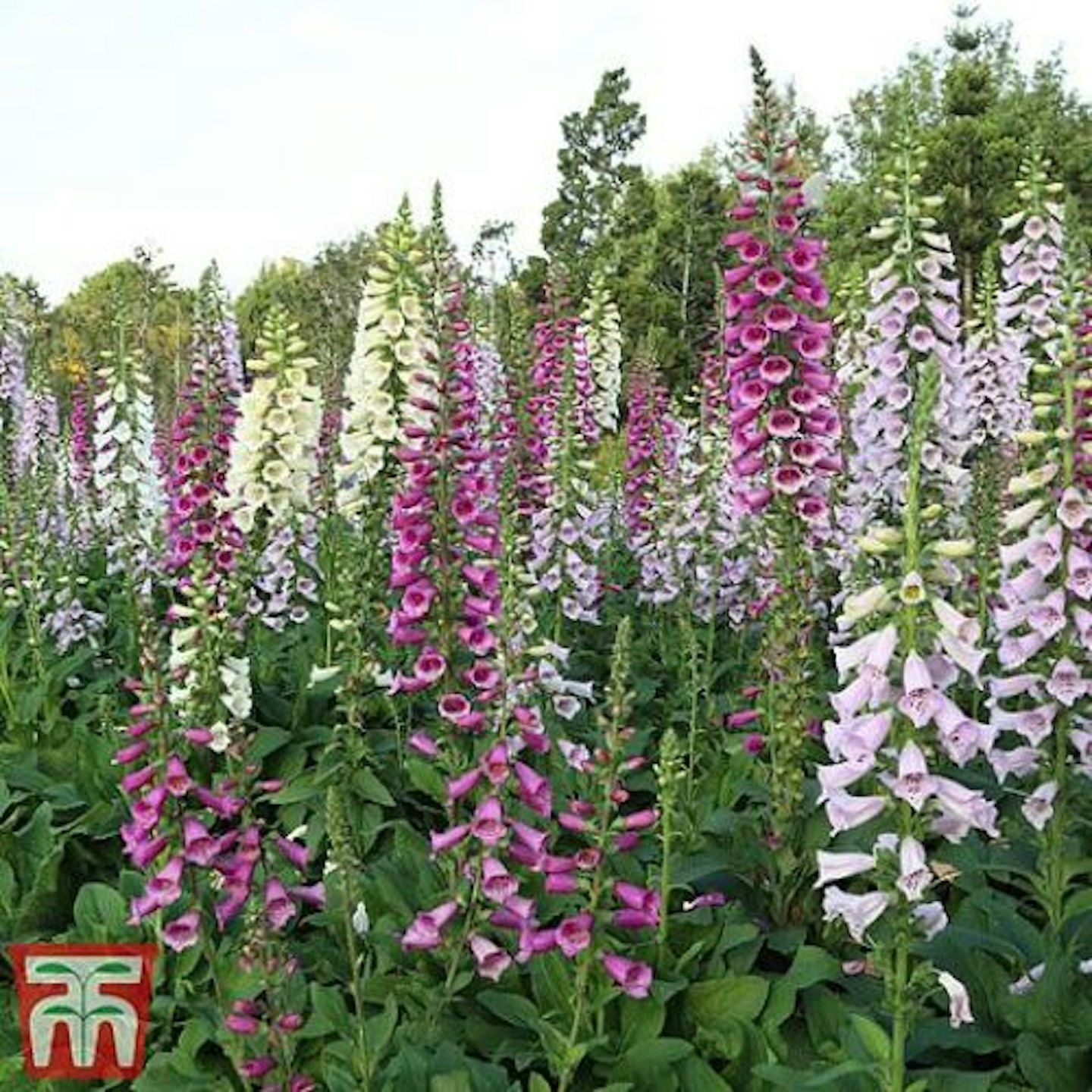The best outdoor plants for shade needn't be dark and brooding in their secluded spot. Whether you are creating a jungle hideaway or a woodland dell, don't be daunted by a north-facing plot in the shade. It's an opportunity to embrace a neglected space by planting sculptural foliage that contrasts in form, hue and height. Ferns, for example, have larger leaves to absorb what little light is available.
There are different types of shade and it's by no means a negative space when it comes to having a bit of shelter from the summer sun. Before you begin planting it's useful to know how light and shade affect your garden over the course of the day. There is a huge difference between a plot that's in direct sunlight but lightly shaded by fences and buildings, compared to deep shade; this being an area that only receives a couple of hours of direct sunlight. In between these two extremes, there are areas that receive some direct sunlight but spend more time in the shade. Partial shade is exemplified by dappled light passing through a canopy of leaves. And moderate shade is an area that receives just three hours of direct sunshine.
Best plants for shade at a glance:
• Best fern for shade: Painted Lady Fern
• Best shrub for shade: Hydrangea arborescens 'Annabelle'
• Best bedding plants for shade: Begonia 'Nonstop Mixed'
• Best biennial for shade: Foxglove Digitalis 'Mixed'
• Best hanging basket plant for shade: Fuchsia ‘Trailing Mixed’
Aspect, light levels, soil type and moisture levels are key factors in choosing the right plants for a shaded spot. Aspect refers to which direction your garden is facing. South-facing gardens get more sun than north-facing. Dry shade is when an area is receiving a limited amount of sunshine and has dry soil. This can be the case next to tall buildings. Add lots of compost to the soil to enrichen it and choose plants that are suitable for those growing conditions. The plants will require regular mulching and may benefit from an irrigation system to keep them well-watered as the plants get established.
Choose from versatile climbing plants, such as ivy, honeysuckle, star jasmine and clematis. Or shade-loving shrubs, such as hydrangeas and viburnums. As well as thriving in shade, hanging plants like English ivy and ferns are great for creating a canopy of sorts because they’re full and leafy. You'll find that begonia bedding plants do very well in shaded spots too, along with other perennial plants such as geranium, hosta and anemone. Scroll down to the FAQs for expert advice on maintaining your shade-loving plants from Modern Gardens writer Geoff Hodge.
Best plants for shade
Best fern for shade
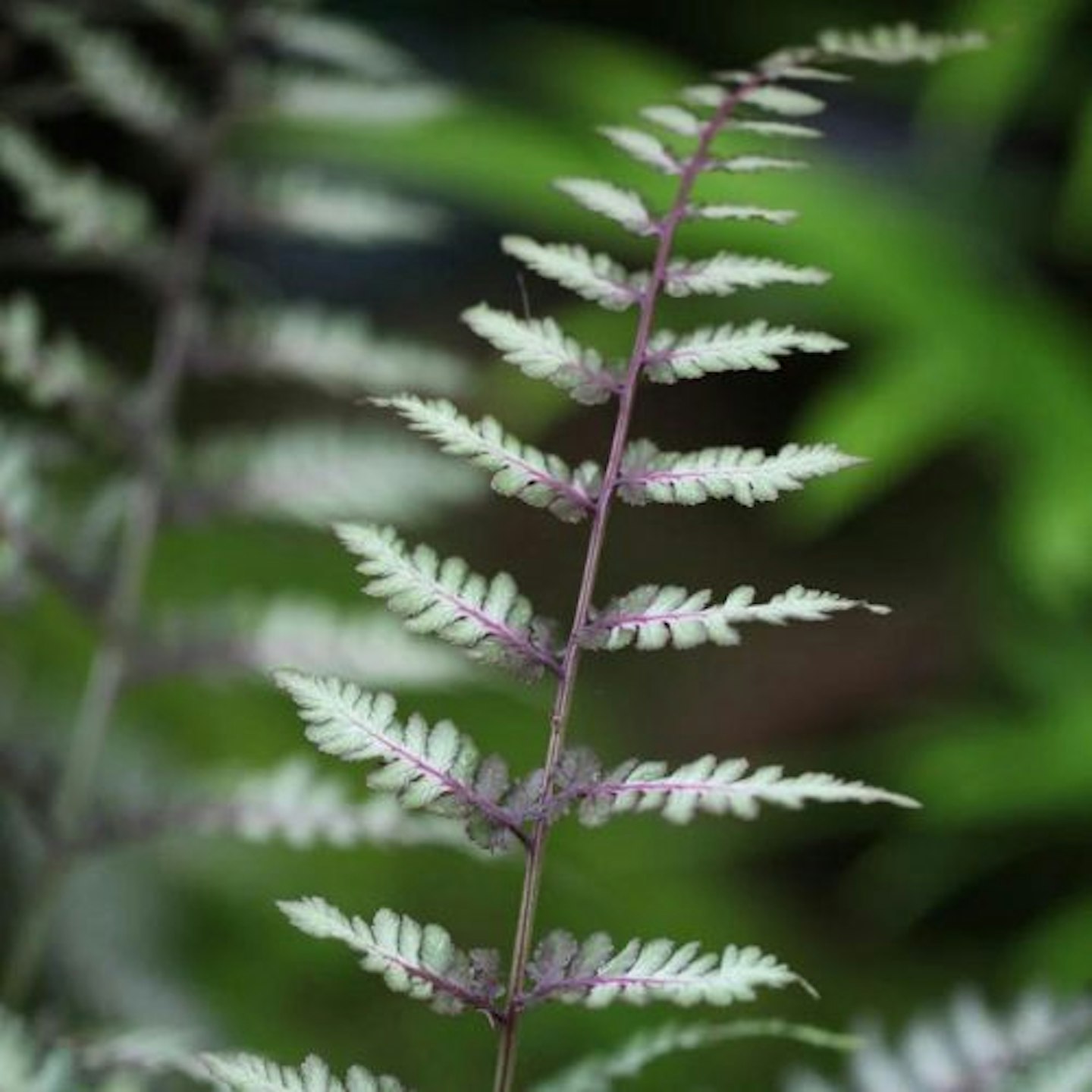
www.crocus.co.uk
Newly emerging fronds have rich purple bronze tones that become greener with a silver dusting as they mature. Athyrium riponicum 'Ursula's Red' Painted Lady Fern will brighten up a shady spot beautifully. If you have a tricky shady spot in your plot where no plant dares to grow, start your own collection of these lush undemanding fronds. This fern will benefit from a good dose of compost and in the winter use dry mulch or straw to protect the crown of the plant. Being deciduous the fronds will die back in autumn.
Customer review: "Need to see how well it does in second year after a hard winter - seems good in shade."
Pros
- Beautiful purple tones
- Easy to grow
Cons
- Has a wide spread, so not ideal for smaller gardens
| Height: | 40cm |
| Spread: | 1.4m |
| Position: | Light shade / shade |
| Soil: | Moist, well-drained soil |
- Deciduous
- Fully hardy
- Average rate of growth
Best shrub for shade

www.sarahraven.com
For wow-factor, you really must include this Hydrangea arborescens 'Annabelle'. It's an easy-grow shrub with its masses of pom-pom blooms. Additionally, hydrangeas make excellent cut flowers. Displaying a large lone bloom by itself in a vase makes the most of ornamental qualities, once it has faded, dispose of the water, trim the stem and it'll dry in situ to last all year. Make the most of their long flowering seasons from July to September. Hydrangeas are fairly low maintenance too, requiring only a thorough deadheading and pruning.
Customer review: "They are growing beautifully in my garden it looks like it could be In the Chelsea Flower Show."
Pros
- A visual treat
- Cut the blooms to display in a vase
- Hardy
Cons
- None
| Height: | 1.5m |
| Spread: | 1.8m |
| Position: | Partial shade |
| Soil: | Broad tolerance |
- Perennial
- Hardy
- Rapid rate of growth
Best bedding plants for shade

www.thompson-morgan.com
You can plant these Begonias 'Nonstop Mixed' in containers, hanging baskets or even in the ground, if you plant them in partial shade. They're weather-resistant blooms, so they will withstand rain and shine. They'll flower into autumn so you can enjoy them well beyond the height of the summer growing season. Begonias will benefit from an occasional feed and take care not to overwater them. Once the flowers have faded deadhead the plant, which encourages more blooms to develop.
Customer review: "Begonias gorgeous. Well packed and healthy plants."
Pros
- Fully double flowers
- Weather-resistant
Cons
- Be careful not to over-water as this will cause new flower buds to drop
| Height: | 30cm |
| Spread: | 30cm |
| Position: | Sun, semi shade or dappled shade |
| Soil: | Not specified |
- Perennial
- Half-hardy
- Average rate of growth
Best biennial for shade
A perfect mix of colours and hardy too. We have picked Foxglove Digitalis 'Mixed', which has tall flower spikes with pretty purple, pink and white flowers. According to the RPSB, many are ‘biennials’ which means they "germinate in year one, form a rosette of leaves and then flower and die in year two. Don’t be alarmed though - you can scatter the thousands of tiny seeds that are left". Enjoy a riot of colour from May to July.
Pros
- Brings height to shaded borders
- Variety of colours
Cons
- No customer reviews
| Height: | 1.2m |
| Spread: | 60cm |
| Position: | Sun / Semi Shade |
| Soil: | Moderately fertile, moist, well-drained soil |
- Biennial
- Hardy
- Rate of growth: expect flowers in the second year
Best hanging basket plant for shade
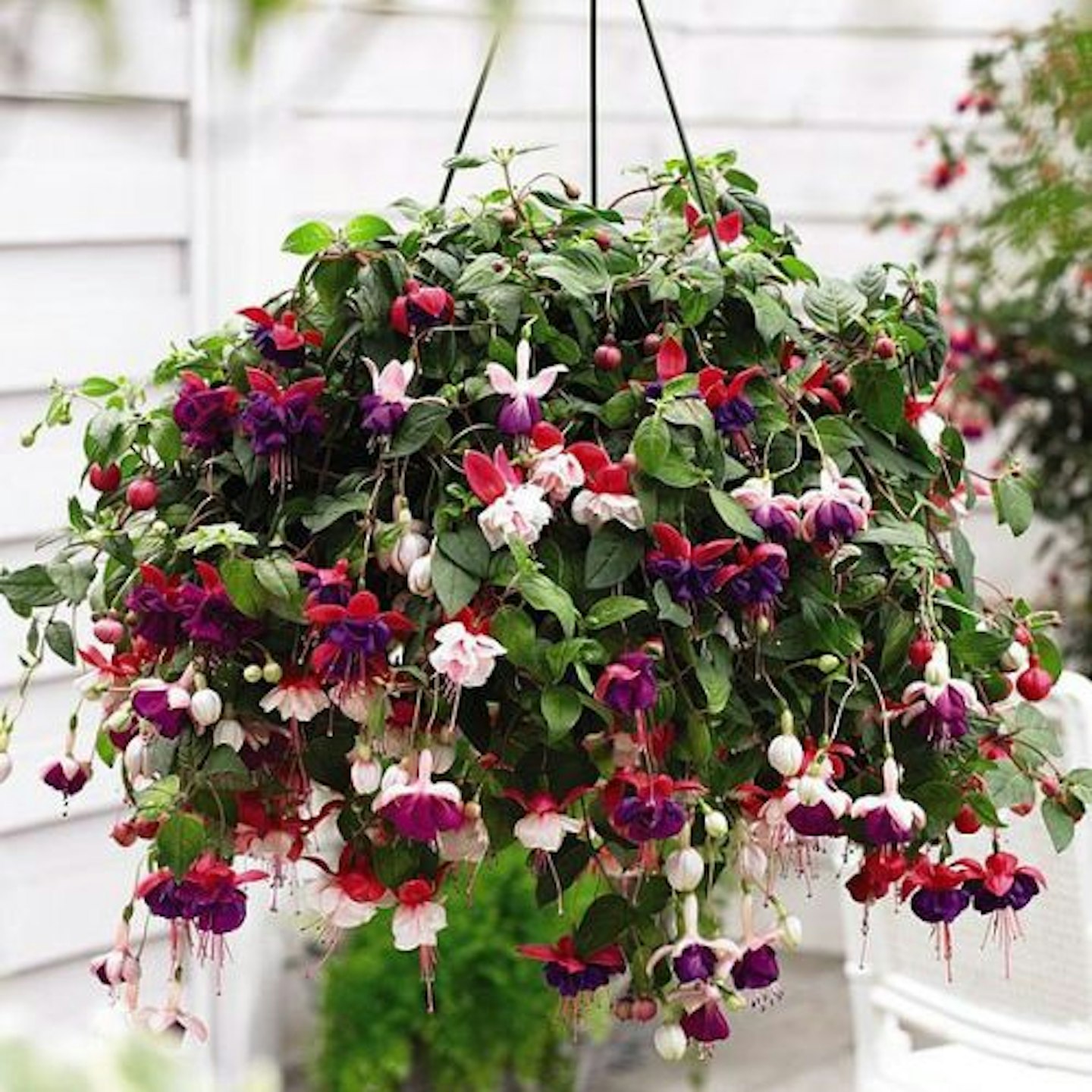
www.suttons.co.uk
For a burst of vibrant colour, you can’t beat a two-tone fuchsia. Fuchsia ‘Trailing Mixed’ produces huge, double blooms in both soft and bright pinks, purples, and crimsons from June-October. For wow-factor, you really must include this easy-grow shrub with its masses of pom-pom blooms. Let your garden dance with these brilliantly bright beauties. They're a top pick for hassle-free flowers.
Pros
- Full on petal power
- Easy to grow
- Long flowering season
- Value for money
Cons
- No customer reviews
| Height: | 30cm |
| Spread: | 45cm |
| Position: | Anywhere |
| Soil: | Not specified |
- Perennial
- Half-hardy
- Moderate rate of growth
Best perennials for shade
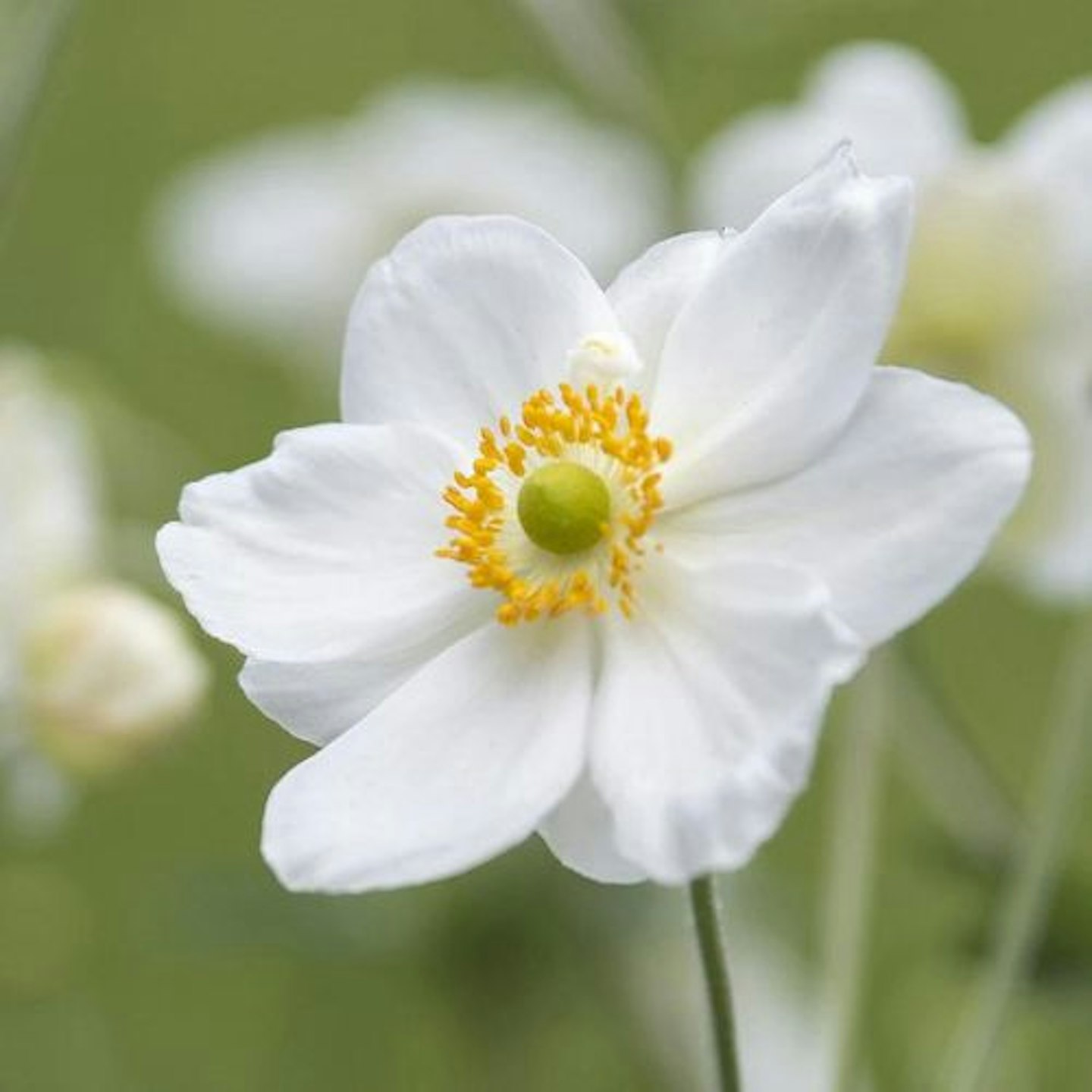
www.crocus.co.uk
With masses of elegant, cup-shaped, white flowers on tall, wiry stems, this charming Anemone × hybrida 'Honorine Jobert' bloom will brighten up your garden in late summer right through to October. They provide a pleasing contrast when planted against dark rocks or under trees. This anemone is a perennial that will die back in autumn, with new growth appearing in spring.
Customer review: "It's an attractive tall plant ideal for the back of a border and it continues flowering well into the autumn. It was very late to put on any growth but despite the very poor growing conditions this year it has burst into full bloom and is thriving."
Pros
- Fast-growing
- Produces masses of flowers
Cons
- Once planted, don't be tempted to move it as anemones don't like disturbance
| Height: | 1.2m |
| Spread: | 1.2m |
| Position: | Full sun / light shade |
| Soil: | Moderately fertile, moist, well-drained soil |
- Perrenial
- Hardy
- Fast rate of growth
Best blooms for shaded spots
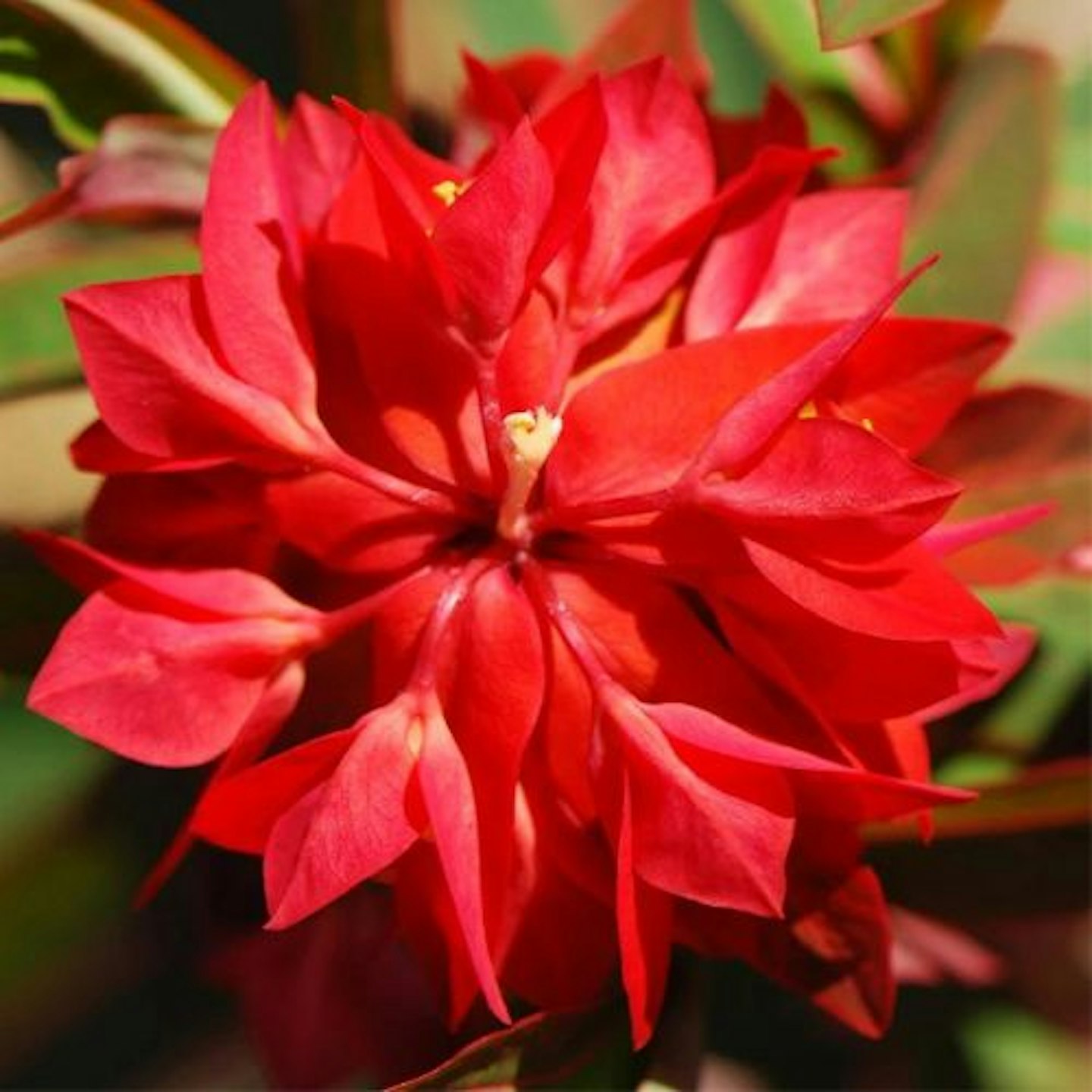
www.crocus.co.uk
Euphorbia Griffithii Fireglow will thrive in a lightly shaded spot and produce vibrant, orange flowers from June to September. They can spread into large clumps and create striking tropical-themed borders. This perennial dies back in autumn and flower again in spring. Wear gloves when cutting back the dead blooms as the sap is a poisonous irritant.
Pros
- Creates a striking fiery display
- Long flowering season
Cons
- Sap can be a skin irritant and poisonous to humans and pets
| Height: | 0.75m |
| Spread: | 0.9m |
| Position: | Partial shade |
| Soil: | Light, well-drained garden soil |
- Perrenial
- Hardy
- Average rate of growth
Best flowers to plant under trees
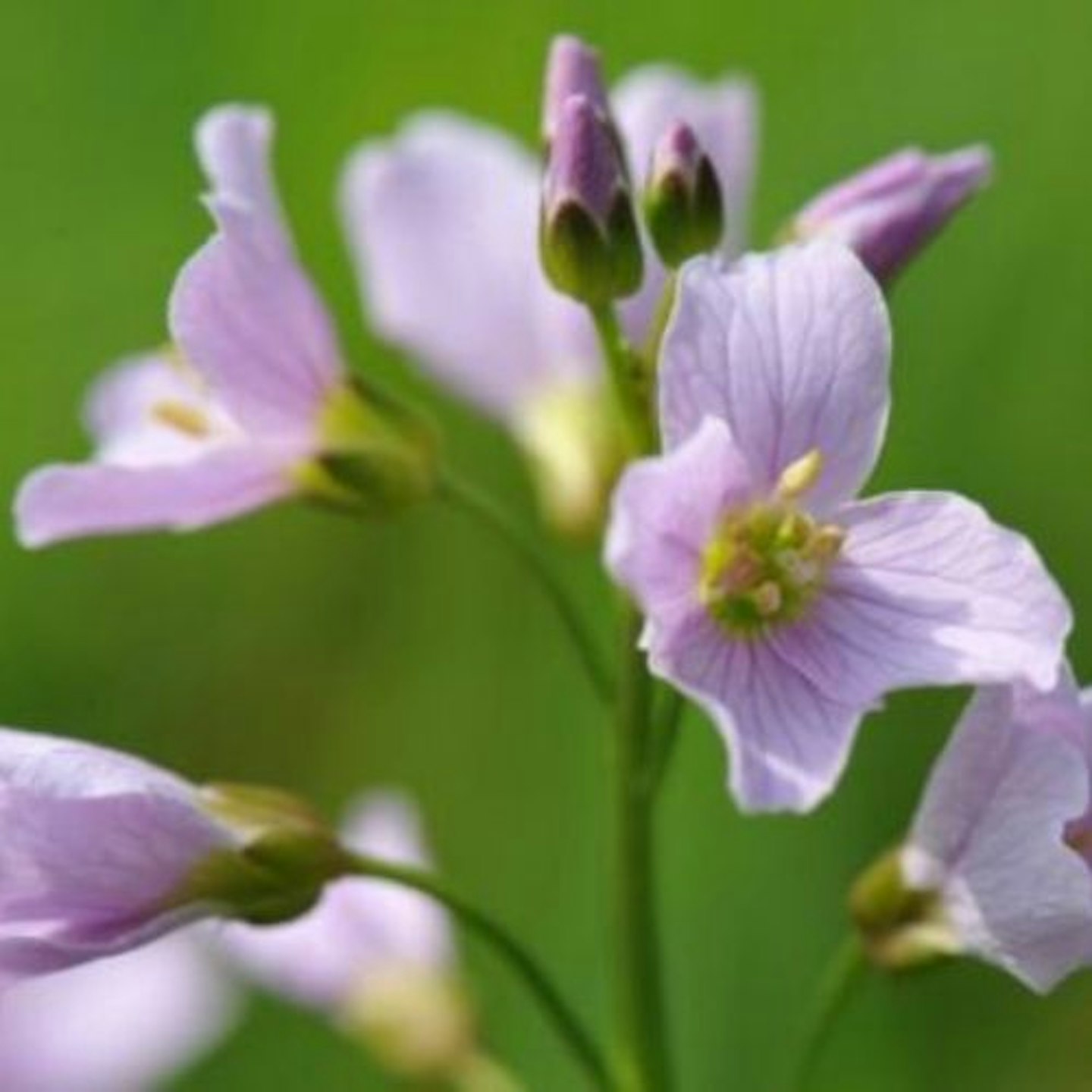
www.ebay.co.uk
Happy under deciduous trees, the five-leaved cuckoo flower or Cardamine pratensis kickstarts spring with lilac blooms, then melts away to let summer plants shine. The young leaves are edible and have a peppery taste like cress. Ideal for a bog garden or damp and dark spot, Cardamine pratensis flowers into late summer when it then goes dormant.
Customer review: "Nice plants with hood root systems. Very satisfied with purchase."
Pros
- Ideal for a bog garden
- Edible leaves
- Does well in a range of soil types: chalk, clay, loam and sand
Cons
- Not the longest flowering season
| Height: | 20-40cm |
| Spread: | 10-50cm |
| Position: | East-facing |
| Soil: | Acid/Neutral/Alkaline |
- Perennial
- Hardy
- Average rate of growth
Best plant in the shade for colour

www.thompson-morgan.com
Flowering for weeks on end this is a cheerful daisy that really packs a punch. This Doronicum caucasicum 'Little Leo' is a type of leopard's bane. Expect a display of sunny side up flowers throughout May and June, attracting pollinators to your garden. A hardy perennial, that thrives in partial and dappled shade, the flowers of this leopard's bane can also be cut to create a cheery vase of blooms of form part of a bouquet.
Customer review: "Just so easy to plant on such quality plants I can't wait to see the splash of colour they will provide."
Pros
- Bees and butterflies love them
- Can be cut to make a vase of flowers
- Hardy
- Cheerful
Cons
- Some customers commented that the plug plants were a bit small
| Height: | 30cm |
| Spread: | 30cm |
| Position: | Sun, semi shade or dappled shade |
| Soil: | Moist, humus rich, well drained soil |
- Perennial
- Hardy
- Rate of growth not specified
Best shrub for autumn colour in shade
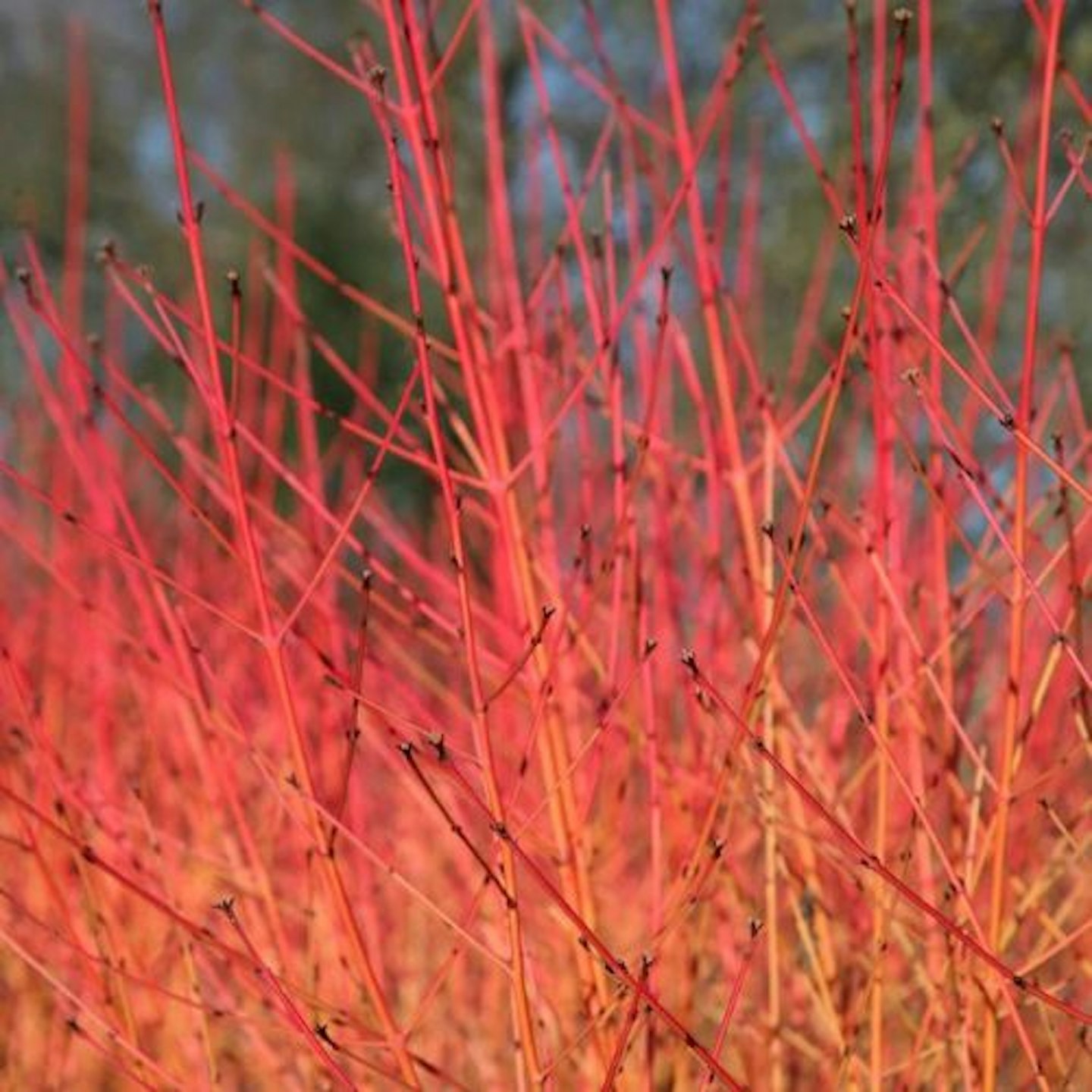
www.crocus.co.uk
Bring a burst of colour to a shaded spot with this blazing dogwood. Cornus sanguinea 'Midwinter Fire' is a hardy shrub with green leaves that turn bright orange-yellow in the autumn. It's a deciduous shrub and the leaves drop to reveal bare red and yellow stems that provide vivid colour in the duller months.
Customer review: "Lovely plant, brightens up an area even in winter."
Pros
- Provides colour in autumn and winter
- Hardy
Cons
- None
| Height: | 2m |
| Spread: | 2m |
| Position: | Full sun / light shade |
| Soil: | Moderately fertile, moist, well-drained soil |
- Perennial
- Hardy
- Average rate of growth
FAQs
Can fuchsias grow in the shade?
Geoff Hodge advises and delights in the benefits of fuchsias, that fill border gaps fast and thrive in partial shade:
"Think fuchsias are old-fashioned? Think again! There are all sorts of gorgeous new varieties, and our absolute favourites are the giant double-flowered ones with enormous ruffled blooms up to 10cm across! They flower reliably and regularly for months, from the beginning of summer until the first hard frost of autumn and are happy in sunny or shady spots. They’re not tolerant of cold temperatures though so treat these bobby-dazzlers as a summer splash of colour and consign them to the green bin once they’ve finished blooming, or move to a frost-free place over winter.
Watching a bud open to reveal a ruffle of petals is simply glorious! Fuchsia flowers are edible and taste sweet but slightly acidic – add a few to your morning yogurt.
What's the best bedding plant to grow in shade?
Most bedding plants prefer a place in the sun, but a few will thrive in the shade. Grow begonias in peat-free, multi-purpose compost in spotted sunshine or a partially shaded area. Avoid south-facing areas as the foliage can burn in direct sunlight. If you're growing begonias in a greenhouse, some shade may be required to help them thrive.
Tuberous begonias are excellent for growing in pots and hanging baskets. They have relatively brittle stems and heavy blooms, so grow them in a sheltered spot. On the other hand, foliage begonias are best grown as houseplants in the shade.
How do I look after dogwood?
A brilliant shrub to set your garden aglow with a lustrous display of glossy stems in an array of show-off shades. Modern Gardens writer Geoff Hodges shares how to make your 'Midwinter Fire' blazing dogwood happy:
"Early summer is a great time to add structural plants to your plot and one of the best is dogwood. You’ve no doubt noticed the colourful stems while you’ve been out and about over winter as they shine out like beacons, especially on a sunny day. But they look good all year with creamy-white flowers in summer and clusters of white berries in autumn. Many boast fab autumn leaf colours too, and the leaves remain attached long after most others have fallen to the ground."
Pick a healthy plant
Choose a dogwood with at least three strong stems and plenty of healthy well-coloured leaves. If it has dying, off-colour or yellowing leaves, give it a miss.
Keep it alive
While these dogwoods will all grow in a partially shaded position, you’ll enjoy the strongest stem colours if you plant them in full sun. They will grow in just about any soil but if yours is very poor, dig in some improver such as Levington Peat Free Organic Blend Soil Conditioner. In containers, use John Innes No.3 Compost.
Help it thrive
Keep the soil or compost moist for six months after planting, while your dogwood grows a good root system. You won’t need to water a dogwood in the ground, unless we have a prolonged dry period, but do keep watering a container-grown plant whenever the compost starts to dry out. Feed in spring with a controlled-release fertiliser such as Miracle-Gro All Purpose Continuous Release Plant Food.
Good to know
As they age, stems lose their glossy good looks, often reverting to a dull brown. So every year in late March or early April, use secateurs to chop all the stems to 2cm above ground level. It’s brutal, but they’ll soon grow back!
If you can’t bear to do this then just cut half the stems one year, and chop the unpruned stems the following year. Use this method too with ‘Midwinter Fire’ as it isn’t as vigorous as the others.
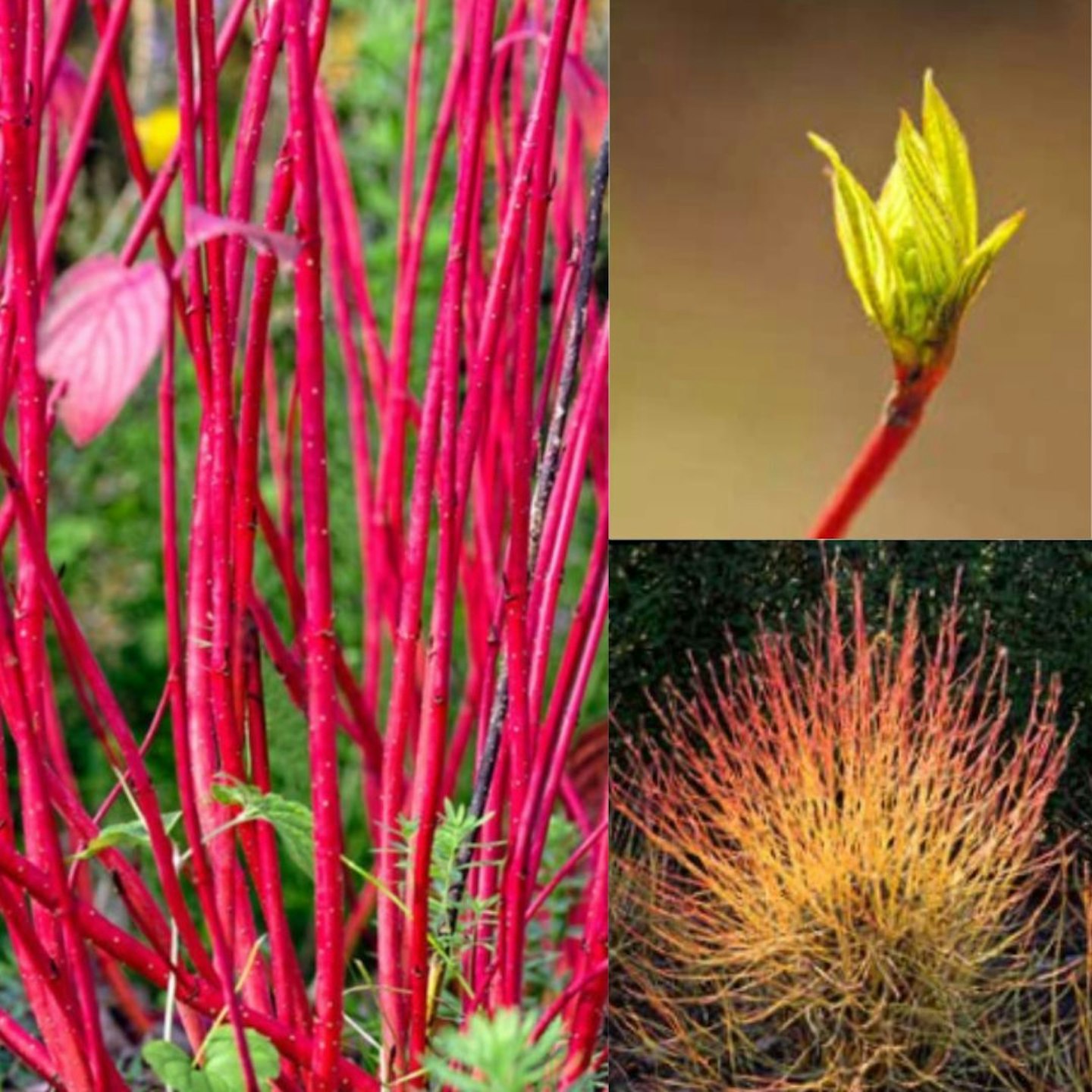
What to read next:
Discover everything you need to know to make your outside space look fantastic, quickly and easily, with hundreds of simple ideas, designer tricks, affordable products and expert advice with a Modern Gardens Membership. Find out more about the benefits of being a Member now.
Natalie Knowles is a Homes & Garden Product Writer for Modern Gardens, specialising in garden trends. When she's not flexing her mow-how, Natalie is a successful artist and illustrator.
